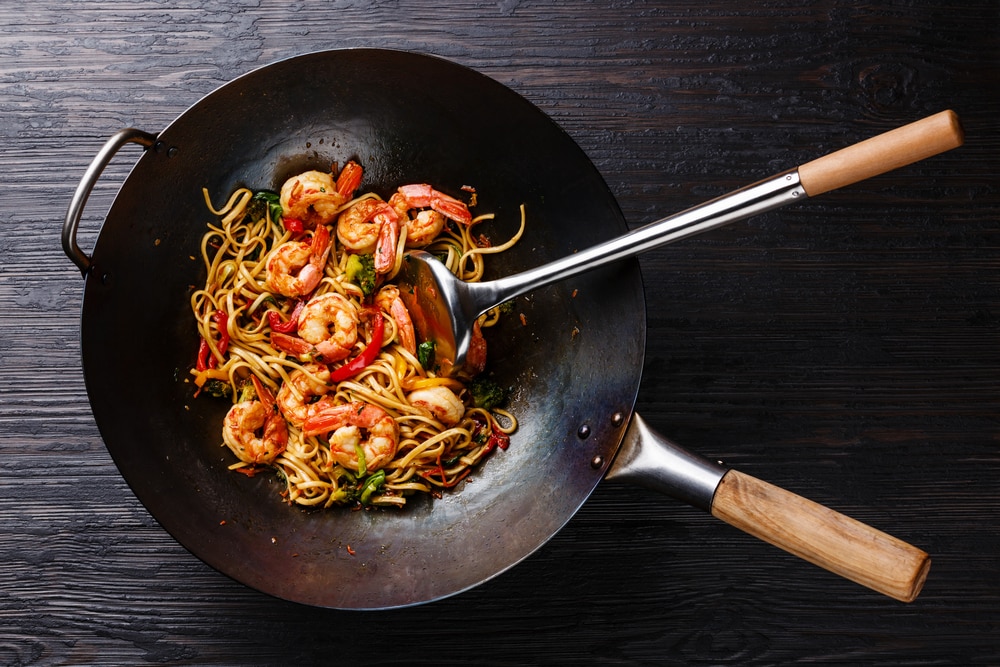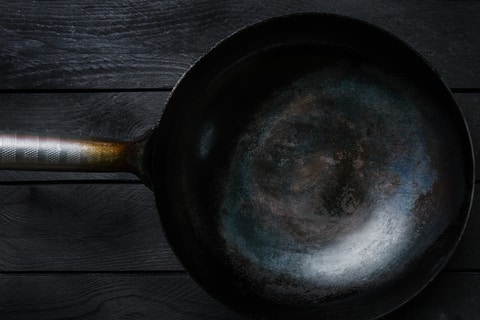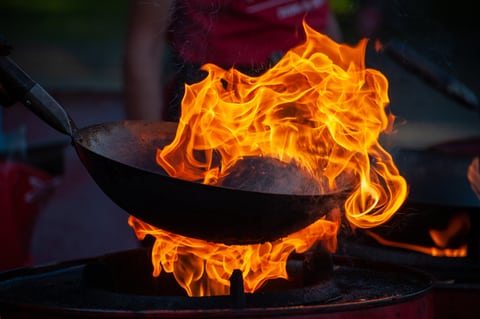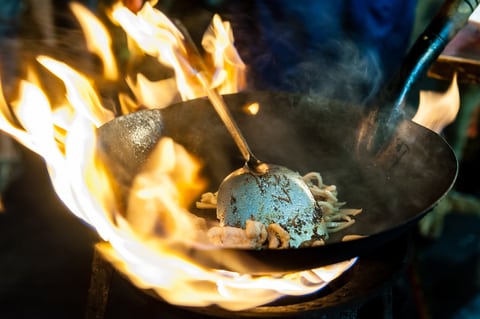
Woks have long been popular cooking utensils in Asian households and western cooks have begun to see their versatility. Woks aren’t just for stir-fries and their ability to cook food evenly and quickly is unsurpassed. Use yours for deep frying, steaming, smoking, and braising.
It’s so important to season your wok carefully to prevent sticking and rusting. However, many people struggle with their woks being tacky after seasoning. If you have ended up with a sticky wok after seasoning it, don’t despair.
Here, we share with you why your wok is sticky after seasoning, what to do about it, and how to season a wok correctly.
A good wok will last you a lifetime, so read on to find out all you need to know about taking care of yours! We recommend buying a classic carbon steel wok, not non-stick or aluminum.
The Wok Is Sticky After Seasoning – What Should You Do?
Seasoning should always be done after purchasing a new wok and periodically through its lifespan if necessary. To begin with, what do we mean by “seasoning”? It certainly doesn’t mean sprinkling it with spices!
Seasoning means creating a protective patina over the inner surface. You want to create an oily layer that doesn’t get washed off but provides a non-stick surface and protects your wok from corrosion.
Seasoning will also impart a deep, smoky (but not burnt) flavor to anything you cook. Of course, if you have purchased a wok with a non-stick surface, you will not need to season it.
When is seasoning done?
A wok is seasoned before using it the first time and any time afterward if the protective layer gets removed or damaged, such as if someone scrubs it off.
How do you season a wok?
Seasoning is a relatively simple procedure that involves 5 basic steps.
- Scour
Your new wok will have been given an anti-rust layer to prevent corrosion in the store. You need to scrub this off. Simply use a metal scouring pad and a little dishwashing detergent.
Scrub the inside of the wok thoroughly then rinse well until the water is clear.
- Burn It!
This is probably the only time you’ll want to burn your wok. Before starting, cover the wooden handles with foil to prevent them from scorching. You’ll also want to turn your cooker hood fan on to help extract the smoke you’re going to create.
Now, using your hob turned to its highest setting, put the wok over the heat and burn it all over. This is easier on a gas hob but can also be done on an electric one.
Just hold the handle and turn every side in turn towards the heat source. You should see the wok change colors until it is matt grey.
- Scrub Again
Once the wok has cooled completely (you can pour cold water inside to speed up the process), scour it again with a little detergent to remove the last of the impurities. Dry it thoroughly with a paper towel.
- Grease It!
Cool the wok then coat it with a little cooking oil such as peanut or canola oil. You will need less than a tablespoonful. Use a pastry brush or paper towel to help coat the inside evenly. There should not be a puddle of oil on the bottom.
- Burn It Again!
Heat your hob again to its highest setting and replace the wok. Heat it until the oil starts to smoke. Keep turning the wok as before until each section stops smoking.
This means that the wok is seasoned. If you like, you can use a blowtorch for this job. Your wok is now ready to use.
What Went Wrong? Why is My Wok Sticky?
Some people struggle with sticky patches of oil on their woks after seasoning them. The sticky parts are simply oil that hasn’t been heated enough (polymerized).
This happens if the layer of oil that’s put on is too thick or if it wasn’t heated enough during the seasoning process.
- Stickiness reason #1- Too much oil
If you try to season your wok with too much oil, it may not all reach the smoking point and burn. The excess will become sticky.
- Stickiness reason #2 – Not heated enough
Some people become concerned when their wok starts smoking over the heat. Please don’t worry – this is a necessary part of the process. Also, each time you cook, be sure to heat the wok over high heat before adding the food.
Perhaps your stovetop doesn’t get hot enough to properly season your wok. This is usually the case with electric hobs. You can instead season your wok in the oven at 350 degrees Fahrenheit.
Put it into the oven upside down with a drip tray underneath to catch any oil drips. Be sure to bake it for an hour.
You will not be able to do this if your wok has plastic or silicone handles. For wooden handles, be sure to cover them with aluminum foil before putting the pan into the oven.
- Stickiness reason #3 – Using the wrong oil
Not all cooking oils are suitable for seasoning as some do not have high enough smoke points. Olive oil is one of these. Choose an oil with a high smoke point (over 400 degrees Fahrenheit) such as peanut oil, canola oil, or coconut oil.
To fix the stickiness problem, you can scour your wok and start again, or simply heat the wok all over and use it as it is. In time, provided you “wok” your food over high heat, these sticky sections will resolve on their own.
You can also try putting the wok upside down over the heat source to burn the sticky bits fully.
Caring for Your Wok After Seasoning and Use
Seasoning forms the foundation patina that will improve with age as your wok gets used provided you don’t scrub it off. After cooking, simply use a soft washcloth or pad and a little detergent (not always necessary) to clean your wok.
If there’s food stuck on, allow the wok to soak for a while with some water inside then scrape the food off with a silicone spatula. Dry the pan well with a dishtowel and then paper towels.
If you like, brush on a few drops of oil before storing the wok ready for its next cook.





